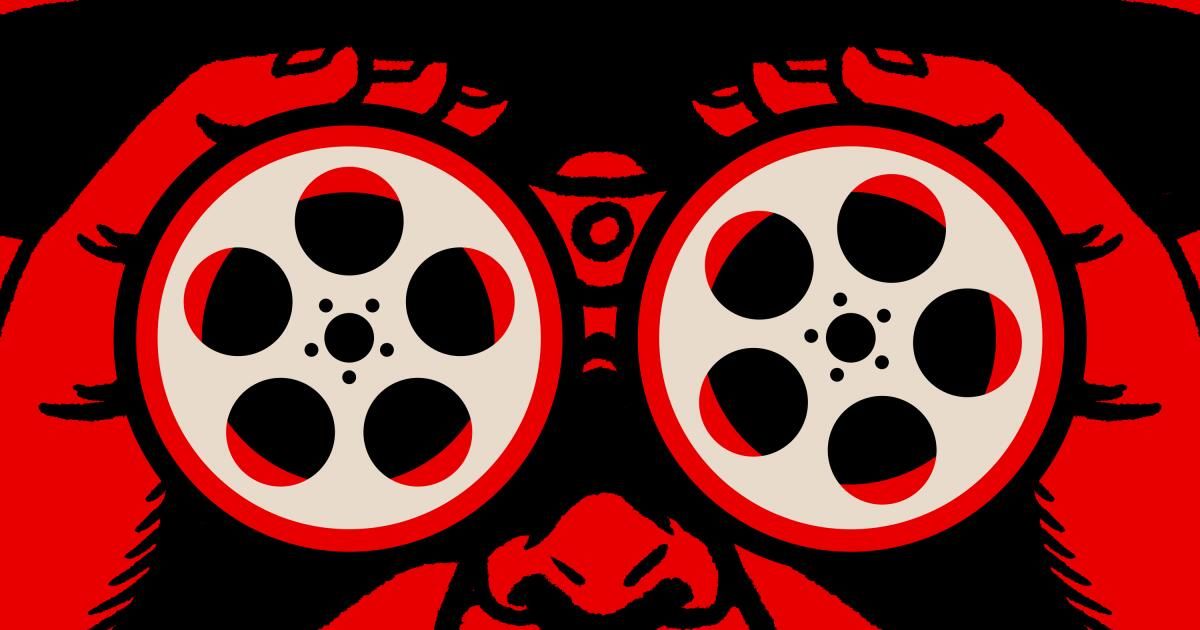Langley, Va. – At the headquarters of the CIA, beyond the beautiful granite stamp on its lobby floor and a wall of carved stars in honor of the agency's fall, experts are working on the complex tasks of Spycraft: officers trained with weapons, computer engineers, virologists, nuclear scientists.
But there are also stories narrators, makeup artists, theater specialties and dancers, Americans who probably never thought that their skills would coincide with the needs of a espionage agency. However, the CIA thought otherwise.
Although it rarely stands out, there is a rotating door of talent between the country's main intelligence agency and its entertainment industry, with inspiration and influence that often work in both directions.
The agency is aimed at professionals at the intersection of arts and technology for recruitment, said the CIA officers to The Times, and continues to cooperate with entertainment giants to inspire the next generation of creative spies.
This month, the agency is helping a New York Times Super Survents in a book for young adults that examines the foundations of the CIA placed during World War II. The scenes of an upcoming film production were filmed at its headquarters, a logistics feat on a hidden intelligence campus in the suburbs of Virginia behind the security perimeter rings, where the officers roam the Bluetooth signals. Another popular transmission television series will return to Langley to film this fall.
But his collaboration is much deeper than that, the officers said. The creative minds in Hollywood and the entertainment industry have had a role in the central intelligence agency, devising smart solutions to their most irritating problems, such as perfecting the art of disguising and taking advantage of the ability of a magician to launch illusions of fascinating. In fact, in the 1950s, a Magician from New York named John Mulholland was hired in secret with the agency to write a manual for the cold war spies in deception and deception.
These days, officers said, creative skills are more valuable than ever in such a technologically complex world.
“You are only limited by your own imagination: No self -centers your ideas,” said Janelle, a CIA public affairs officer, granted the ability to speak under his first name at the request of the agency. “We are always looking for partners.”
An elusive story
David McCloskey, former CIA analyst and author of the “Damascus Station” and other spy thrillers, offered several theories about why the agency could be interested in promoting a robust relationship with Hollywood, calling it “a two -way street.”
“There have been operational applications for espionage,” McCloskey said. “It is probably the exception to the rule, but when it happens, it is convincing.”
It is easy to see why the CIA leaders would be interested in Hollywood, he said, partly to shape the agency's impressions. “But his bread and butter business is receiving people to give secrets,” he continued, “and part of that is to approach people in power.”
“The closer you are Hollywood,” McCloskey added, “that's really interesting 'in' having many interesting conversations.”
The CIA mission of rescuing six American diplomats from Tehran during Iran's hostage crisis, the theme of the movie “Argo”, presented a detailed trick focused on a manufactured film project.
(CIA Museum)
Some of the most emblematic missions of the CIA, at least the declassified ones, document the rich history of the agency with Hollywood, including the Canadian caper, when the CIA agents disguised themselves as a filming team to rescue six US diplomats in Teherán during the Hostage crisis of Iran, a film operation will recognize as the plot of “Argo”.
“'Argo' was almost too crazy to believe,” Brent said, an internal historian of the CIA headquarters. “It's almost more Hollywood than Hollywood.”
Canadian Caper was inspired by Hollywood and was based on Hollywood's talent. Agent Tony Méndez had been a graphic artist before joining the agency and helping to make the mission.
Another key player was John Chambers, the makeup artist who gave the world the ears of Spock in “Star Trek” and won an honorary Oscar for his work as a pioneer Simian in “Planet of the Apes.” He was awarded the CIA Intelligence Merit Medal for his work in the undercover rescue effort.

The Los Angeles Times divided the story in February 1975 that the business tycoon Howard Hughes had lent his ship, the glomar explorer, as a cover for a CIA operation.
(CIA Museum)
Only a few years before, Howard Hughes, then one of the richest men in the world and a tycoon in the media, cinema and aerospace, agreed to work with the CIA to provide coverage for an effort of the agency to lift a sunk nuclear nuclear submarine of the Pacific Ocean floor.
Disproorating the glomar explorer of Hughes under the appearance of mineral extraction, the CIA was able to save the majority of the submarine before the Times broke a story that blew its cover, “the story that sank our efforts”, in the language of the CIA.
And another mission was made possible thanks to a device invented by a professional photographer, a device that later became the inspiration of an exaggerated scene in the successful Batman movie “The Dark Knight”.
In Project Coldfeet, the CIA agents who collect intelligence at a Soviet station erected on an ice sheet precariously drift in the Arctic needed a reliable extraction plan. But how do you pick an agent without landing a plane on the ice?
The answer was the “Skyhook”: the balloons raised a leash attached to a harness used by an agent at the top of the sky. A CIA plane hooked the belt and took the agent to a safe place.
In “The Dark Knight”, Batman makes a dramatic escape displaying the same type of globe.
'The spy of superhero'
The leadership of the CIA often says that the agency's acceptance is more difficult than to enter Harvard and Yale combined. However, the agency still has challenges that recruit the type of talent that it is looking for, either to reach those with unconventional abilities or to convince them that they must leave safe jobs, relatively well paid and comfortable for a secret life of public service.
It is not an easy task to manage work in the agency, especially with the family, CIA officials recognized. Deciding whether and when to share the true identity of one with their children is a regular struggle. But Janelle said that the CIA tells the potential recruits that there is a middle ground that does not require that they abandon their existing lives.

A professional photographer who works with the CIA invented what was known as the “Skyhook”, a air recovery system used by the espionage agency on an Arctic Mission and then appeared in the 2008 Batman movie “The Dark Knight.”
(CIA Museum)
“People don't have to leave their companies to help their country and work with the CIA,” said Janelle. “People come here because they love their country and know they can make a difference.”
Janelle is part of a team that is regularly involved with creatives who want to portray the agency or spies as accurately as possible.
“Some producers and directors approach and care about precision,” said Janelle, “but finally choose and choose what will work for the film or the show.”
It is also known that CIA analysts leave the agency of opportunities in the entertainment industry, write books and scripts that are based on their experiences, as long as they do not track too much with those experiences.
Joe Weisberg, the writer and producer behind the television series “The America”, and McCloskey, who works in a fifth novel focused on American and British intelligence, were part of the agency before launching their writing races. And as former students of the CIA, they had to present their work for their review.
“There is a whole process of classification publication and review,” Brent said.
That process can be a little work, McClosKey said: “Literally write with black ink.”
But it is much more difficult for non -fiction writers than novelists.
“There could be fragments of crafts, or refer to assets, or people in the agency, which are clear,” said McCloskey. “But with the novels, it is not so difficult to write them to take them through the Review Board.”
As they can, studies often repeat the same falsehoods on the CIA, regardless of how often they are corrected. Officers and agents are not the same, for example. And as disappointing as it can be for lovers of spy thrillers, most officers are not licensed or trained to transport weapons.
“One thing that Hollywood is often wrong is the idea that it is an officer who does everything, when it really is a team sport here,” said Janelle.

Jessica Chastain, Center, plays a member of the spy elite team and military agents who were in secret to finding Al Qaeda leader, Osama Bin Laden, in the Columbia Pictures 2012 “Zero Dark Thirty” movie.
(Jonathan Olley / Sony Pictures)
“Zero Dark Thirty”, a Oscar -winning film launched in 2012 about the search for Al Qaeda leader, Osama Bin Laden, was widely acclaimed but criticized by some within the intelligence community for the credit that gives a single analyst of the fictional CIA for tracking him.
McClosKey sympathizes with the writer's dilemma.
“I cannot have 35 people in a team. From the point of view of the storytelling, it simply does not work,” he said, recognizing that little in the field of espionage is captured precisely on the screen, although there are many old spies available to work as consultants.
“There is no lack of sources to do it well,” he said. “It is that the spy superhero, the Jack Ryans and Jason Bournes, are more or less the representation of the Hollywood espionage.”
By inexactorly glorified and dramatized, the agency hopes that Hollywood's work can keep the turning door in motion, inspiring atypical talent to join their ranks.
“We have architects, carpenters, people who worked in logistics,” Brent said. “People might not realize the range of skill sets here in the CIA.”
And as the Canadian cape showed, sometimes Spycraft requires stagnation. It is possible that what is most needed to complete the next mission is not oceanography or data mining, but costume design. Or maybe another dancer.












